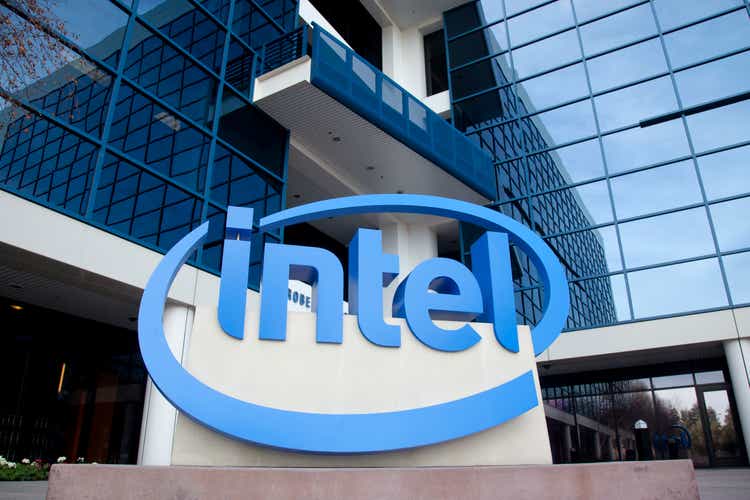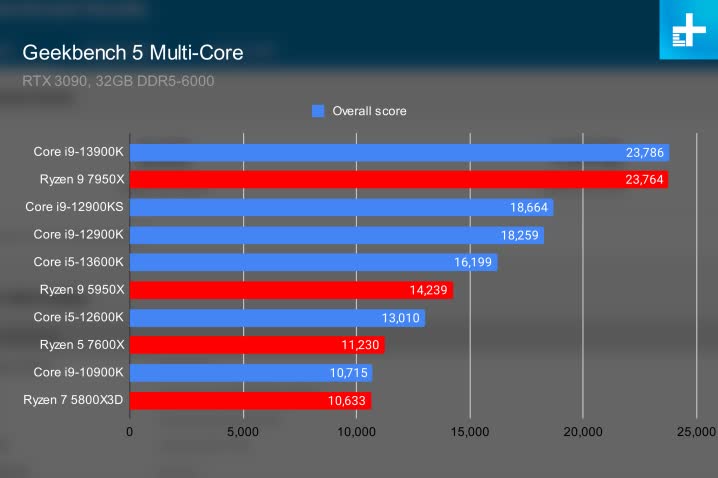JasonDoiy
Introduction
The pandemic has changed the world in many ways, and one of the biggest changes came from the semiconductor industry. The United States and European countries quickly realized that they were over-reliant on Taiwan and South Korea for advanced semiconductor fabrication. With China claiming Taiwan and South Korea’s economic dependency on China, the potential future risk surrounding semiconductor manufacturing was too grave for the United States and the European Nations to ignore. A semiconductor is the building block of modern innovation; without it, one will quickly lose the race. Thus, the Western nations came up with a solution: Intel (NASDAQ:INTC)
When only looking at Intel from an economic lens, an investment in the company may not make sense. The company has been underperforming its competitors for the past few years with its financial performance worsening; however, when looking at Intel from a political lens, the story is vastly different. The world’s biggest and most influential countries are throwing hands over fists to root for Intel’s success. For these countries, Intel’s success is directly tied to its national security agendas. Failure is not an option. Therefore, with these backings and successful turnaround efforts that Intel has proved so far, I believe Intel will reach a turning point in 2023 starting with the release of Intel 4.
Geopolitical Landscape
The geopolitical landscape is creating an immense tailwind for Intel. The United States and European Nations, the Western Nations, are viewing China as a serious threat to their national security values. NATO, a military treaty between these nations, has, for the first time, named China as an existential threat to their world order. Each individual country’s leaders are also open about expressing China’s threat. UK’s Rishi Sunak recently said that the “Golden Era” with China is over, and the Biden Administration’s key agendas have been to curb China‘s economic, political, and military influence.
Unfortunately, despite the Western Nations’ efforts to be clear from China’s risk, the world is over-reliant on East Asian countries for semiconductor production, TSMC (TSM) in Taiwan and Samsung (OTCPK:SSNLF) in South Korea. China continues to push the one-China policy where Taiwan is a part of China just ruled under a different political system while South Korea’s economy is heavily influenced by China. Further, if a conflict was to happen, the geopolitical location of these countries will make the Western Nations’ supply of critical semiconductors in peril. Taiwan only sits 100 miles away from China’s coast while South Korea is touching the border with North Korea. As a result, the Western Nations view semiconductor production in their country to be directly tied to their national security. Hence, given that Intel is the only company in the West with a remote chance of manufacturing highly complicated semiconductors in the near future, Intel is receiving wide and deep support from the governments of the most powerful and influential nations.
In the United States, CHIPS Act is providing $54 billion in direct subsidies and $24 billion in tax credits with Intel expected to receive about $10-$15 billion. Further, on top of the $7.3 billion from German expansion, the European Union will provide 43 billion euros in its Chips Act to bring semiconductor manufacturing to Europe bringing about $6.8 billion in benefits to Intel. Overall, Intel is receiving unparalleled support from the government in the monetary and political environments, and as long as the geopolitical tensions continue, the government’s support for Intel will not wane. Money may not be the biggest problem if China’s threat is “existential.”
Intel’s Progress
In turning around its business, Intel has made significant progress so far with a viable goal going into 2023.
Intel’s plan was shown in its roadmap release in 2021 where the company’s goal was to overtake semiconductor fabrication leadership in 2025. The company’s initial goal of starting the production of Intel 4 in 2022, Intel 3 in 2023, and Intel 20A/18A in 2024 were met with doubts. Many analysts viewed the company’s goal as unrealistic. Fast forward to today, Intel has confirmed that Intel 4, Intel 3, and Intel 20A/18A are on track.
How does this vision, if achieved, differentiate Intel from its competitors?
EUV Lithography is an advanced machine used in semiconductor manufacturing to create the smallest nm nodes, and Intel 4 will be the first Intel semiconductor to use the EUV technology. On the other hand, Samsung has been testing EUV since 2019 and TSMC has been producing using EUV since 2019. Thus, the production of Intel 4 creates a leap for Intel finally putting the company’s competitiveness near TSMC and Samsung. Further, Intel 20A and 18A will use GAAFET technology, which is a much more efficient form of semiconductor design than the current FINFET technology. TSMC is planning to launch a 2nm node semiconductor with GAAFET technology in 2026, a year later than Intel. Samsung already uses GAAFET but is continuing to struggle with the yield at 3nm today. Thus, if Intel’s goal could be achieved, Intel’s leadership takeover is viable.
It may seem as if Intel is significantly lagging behind its competitors when directly comparing the nanometer launch dates, but nanometer number comparison, in my opinion, does not tell the whole story. It is not a standard number that TSMC, Intel, and Samsung use. Rather, comparing their energy efficiency and processing power should be used.
Raptor Lake, Intel’s 13th generation semiconductor, uses Intel 7, a 10 nm fabrication, and AMD (AMD) Ryzen 7000 series uses TSMC’s 5 nm fabrication. Contrary to what many investors may think, both products’ performance is similar to each other. How could this be? Intel is using an outdated 10nm fabrication while TSMC is using the newest 5nm fabrication. Intel’s chip uses far more core energy consumption than AMD’s, but beyond this reason, I believe Intel is not significantly behind TSMC and Samsung.
Digital Trends
Nanometer number differs by company, and Intel’s 10nm is more efficient than TSMC’s 7nm. Intel may have lost its throne to its competitors putting profitability over innovation with the last management team, but Intel was a better company. Intel 4, Intel’s 7nm chip, likewise, is expected to be better than TSMC 5nm and be on par with TSMC 3nm. Intel stalled in recent years, but as it is getting back on track, retaking leadership is realistic.
Why?
It is hard to pinpoint exactly why, but I believe the reason behind Intel’s past technological prowess and potential future leadership comes from human capital. At the end of the day, the quality and competency of engineers create a good product, and Intel is based in the United States, the unchallenged in semiconductor technology. Semiconductor was created and developed in the United States, so the US has the strongest foundational science and technology behind semiconductors. Decades of research, experience, patents, and ecosystems are behind the United States or Intel. TSMC and Samsung, on the other hand, started their semiconductor business after their founders studied and worked in the US semiconductor industry. The foundational science, technology, ecosystem, and human capital supporting their respective industries are far shallower. I believe it is a mistake to ignore the semiconductor hegemony the United States as a nation has.
Risk to Thesis
Intel’s current operational standings are in a terrible state. Intel’s revenue declined 15% year-over-year while its gross margin plummeted 12.4 percentage points to 45.9% in 2022Q3. Further, the company’s net income fell 85% to $ 1 billion. Intel’s massive investment efforts to bring the company back to leadership combined with the semiconductor industry-wide slowdown have been hitting the company. This trend is expected to continue into 2023. However, as I have said because I believe the government’s willingness to support Intel combined with Intel’s potential semiconductor leadership takeover in coming years, I view this risk to be temporary. Intel will be releasing Intel 4 in just a few months in 2023.
Further, similar to the United States and the European Nations, Taiwan, and the South Korean government also realize the importance of semiconductor leadership to their respective nations. TSMC and Samsung are also going all-in to keep their technological prowess. Starting with Samsung and South Korea, the South Korean government is committing $260 billion by 2029 to create a semiconductor ecosystem in the country. Samsung is also aggressively innovating with the goal of producing 1.4 nm chips by 2027. The Taiwanese government is also supporting its industry through aggressive tax breaks, favorable legislation, and research support to maintain Taiwan’s leadership. TSMC has committed to investing over $100 billion over the next three years to maintain its leadership. The competition will not be easy for Intel, but given the semiconductor hegemony the United States and Intel enjoyed for decades, I believe it is possible for the company to catch up.
Summary
Intel is in the middle of turning around its massive company. The company is putting everything it has into regaining semiconductor leadership competing against Samsung and TSMC. Thus, given that Intel is lacking against competitors, investing heavily, and operating in a slowing semiconductor market, Intel’s current operating state is poor. However, I believe Intel will be able to achieve leadership in the coming years through the decades of the semiconductor ecosystem that has been built up. Intel’s first fruit or turnaround efforts are expected to ripen in 2023 with Intel 4, and I believe it will signal confidence to investors that Intel’s leadership is viable.
Editor’s Note: This article was submitted as part of Seeking Alpha’s Top 2023 Pick competition, which runs through December 25. This competition is open to all users and contributors; click here to find out more and submit your article today!”


Be the first to comment